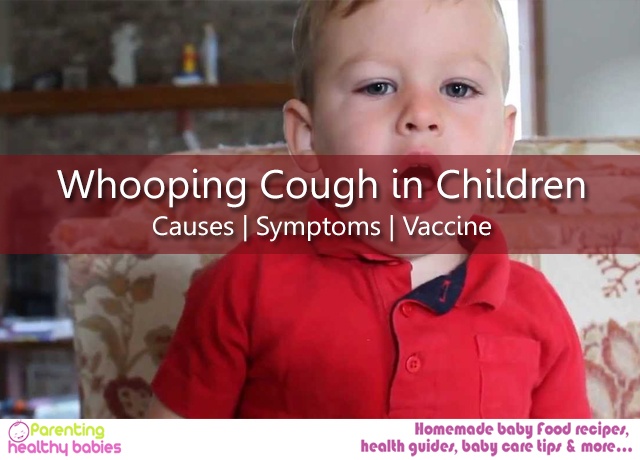Tetanus is a severe illness of the central nervous system caused by bacteria which can cause death. It is not contagious but it can be prevented by a vaccine. It is also known as lockjaw. It is most common in –
- Injuries involving dead skin such as burns, frostbite, gangrene or crush injuries
- Wounds contaminated with soil, saliva (spit) or feces especially if not cleaned well
- Skin punctures from nonsterile needles like with drug use or self-performed tattooing or body piercing
Neonatal tetanus is seen in newborns born in unsanitary conditions, especially if the umbilical cord stump becomes contaminated. Routine and proper immunizations and sanitary cord care have made newborn tetanus very rare in developed countries.
In this article:
Causes of Tetanus in a Child
Children Risk for Tetanus
Symptoms of Tetanus in a Child
Tetanus Diagnosis in a Child
Treatment of Tetanus in a Child
Possible Complications of Tetanus in a Child
Prevent Tetanus in Child
Tetanus in Children: Symptoms, Causes & Treatment
Causes of Tetanus in a Child
It is caused by the poison (toxin) of tetanus bacteria called Clostridium tetani and is not a contagious illness. The bacteria usually enter the body through a wound in the skin and are found to live in soil and animal manure. It occurs more often in warmer climates or during the warmer months.
Children Risk for Tetanus
Tetanus is not common in the United Stated because children are vaccinated against it. A child is more at risk if has not had a tetanus vaccine and has a skin injury in an area of the country where tetanus may be active.
Symptoms of Tetanus in a Child
After a child is exposed to tetanus bacteria, it may take from 3 to 21 days for symptoms to occur. In babies, symptoms may take from 3 days to 2 weeks to start. The most common symptoms are as follows –
- Stiffness of the jaw (lockjaw)
- Stiffness of the abdominal and back muscles
- Contraction (tightening) of the facial muscles
- Convulsions
- Fast pulse
- Fever
- Sweating
- Painful muscle spasms near the wound area. If these spasms affect the larynx or chest, the child may not be able to breathe
- Trouble swallowing
The symptoms of tetanus can be like other health conditions and make sure to child sees a healthcare provider for a diagnosis.
Tetanus Diagnosis in a Child
The doctor will ask about the child’s symptoms and health history. Also, ask about the recent history of a bite or scratch or other skin wounds that can be asked. A physical examination can also be performed. The physical examination will include checking of any kind of skin wounds.
Treatment of Tetanus in a Child
Treatment will depend on the child’s symptoms, age, and general health. Also, depends on how severe the condition is. Treatment will be for tetanus or to reduce the risk for tetanus after an injury which may include –
- Cleaning the skin wound
- Giving a series of tetanus antitoxin shots
- Prescribing antibiotic medicine
In severe cases, the child may need to be in the hospital and treatment may include-
- A breathing tube inserted into the front of the throat (tracheostomy) if the child has breathing problems
- Medicine to control spasms
Talk with the child’s healthcare providers about the risks, benefits and possible side effects of all medicines
Possible Complications of Tetanus in a Child
Complications of tetanus are as follows –
- Vocal cord spasms
- Broken bones from severe muscle spasms
- Breathing problems
- Lung infection (pneumonia)
- High blood pressure
- Abnormal heath rhythms
- Blood clot in the lung (pulmonary embolism)
Prevent Tetanus in Child
Two most important ways to prevent tetanus are as follows –
- Getting vaccinated against tetanus – A child should be given 5 DTaP shots. A DTaP shot is a combination vaccine that protects against 3 diseases: diphtheria, tetanus, and acellular pertussis.
- The first 3 shots are given at 2, 4 and 6 months of age
- Next shot that is the fourth shot is given between 15 and 18 months of age
- After this fifth shot is given at 4 to 6 years of age
- A booster shot of DTaP should be given to 11 or 12-year-old at a regular checkup. The DTaP booster also protects against tetanus, diphtheria and acellular pertussis diseases
- Pregnant women should get a DPT booster between weeks 27 and 36 of pregnancy to increase protection for their baby after birth
- Getting a shot (post-exposure tetanus prophylaxis) after an injury that could cause tetanus – Post-exposure prophylaxis involves getting tetanus shots after an injury and shots given will depend on –
- When the patient last had a booster
- The total number of tetanus vaccinations the patient has had earlier
- The nature of the wound
Conclusion
It is important for a child to get vaccinations properly and on time and for full immunization consult the doctor.
References
https://www.ncbi.nlm.nih.gov/pubmed/520667
https://www.urmc.rochester.edu/encyclopedia/content.aspx?contenttypeid=90&contentid=p02549
https://kidshealth.org/en/parents/tetanus.html













